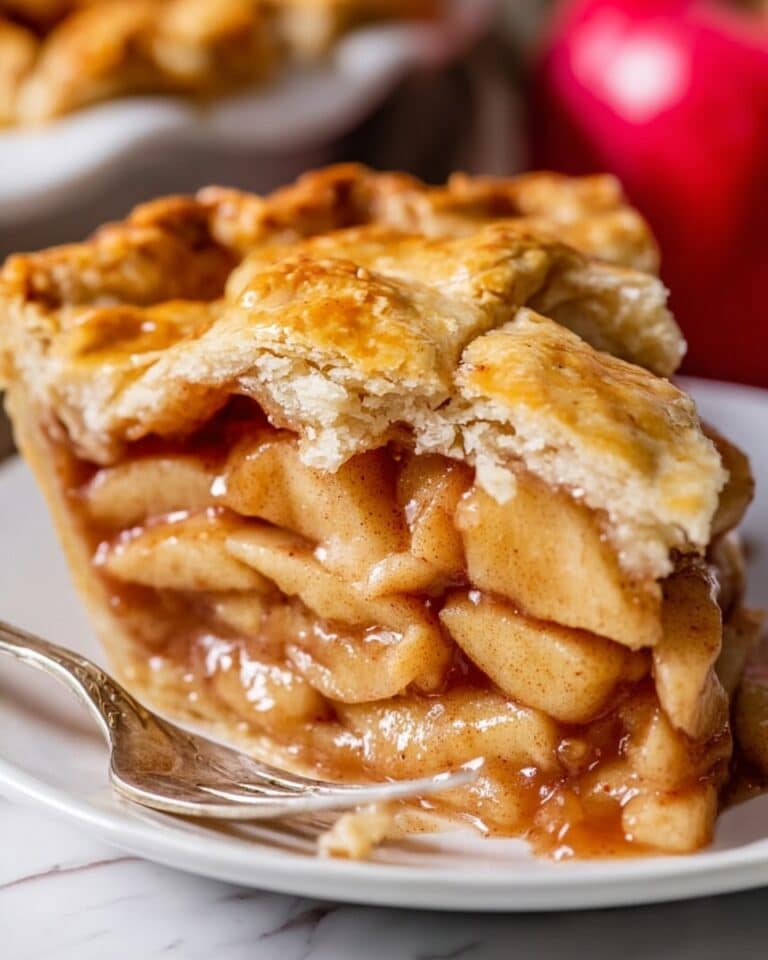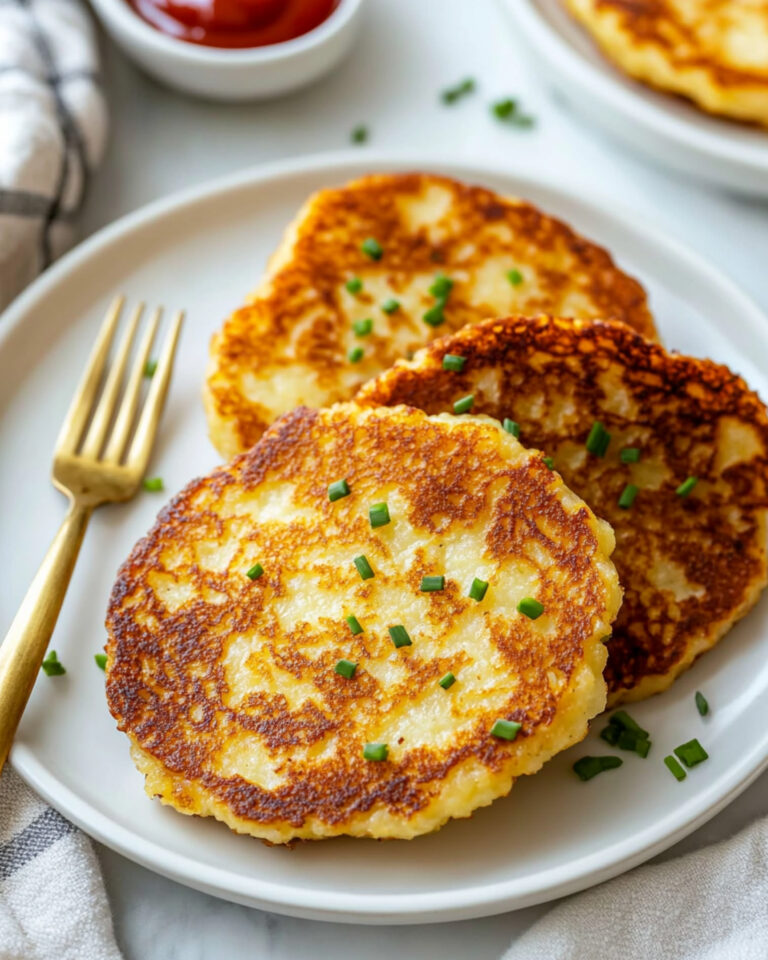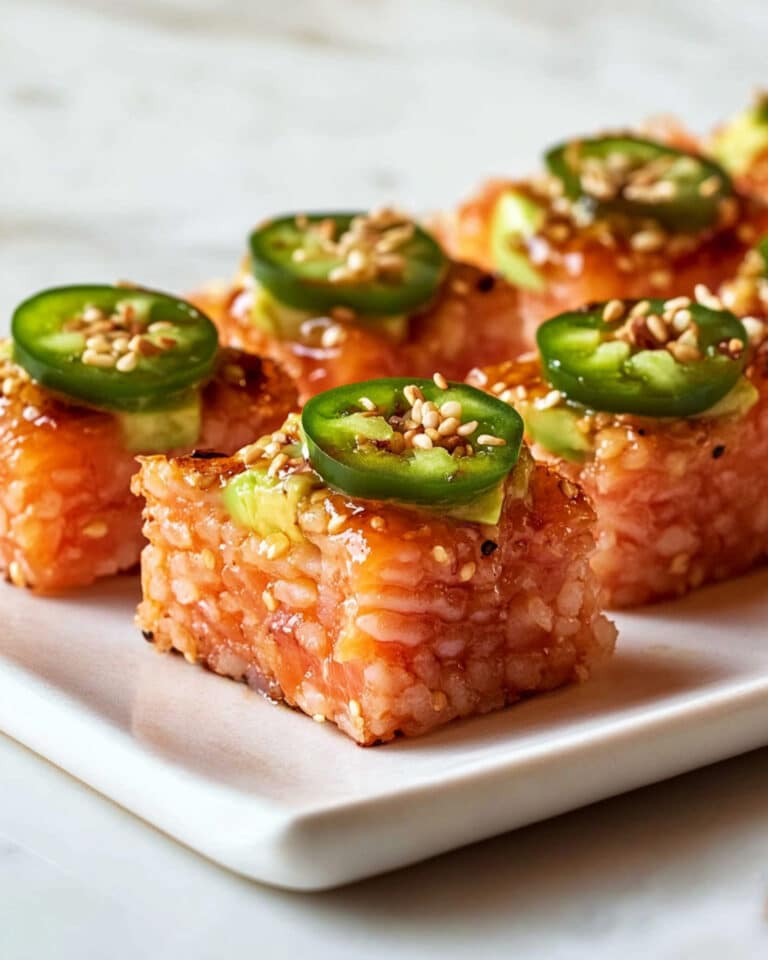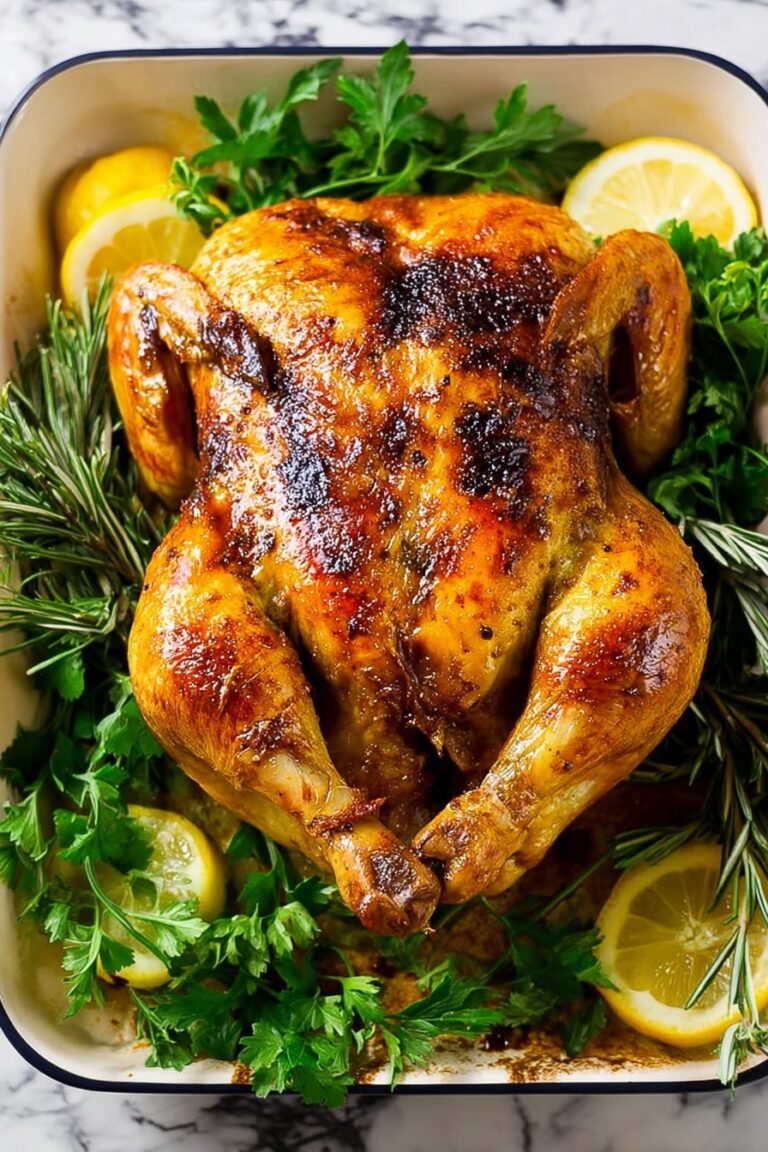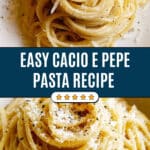If you love simple yet incredibly flavorful Italian dishes, then you’re going to adore this Cacio e Pepe Pasta Recipe. It’s one of those magical recipes that requires only a handful of ingredients but delivers rich, comforting flavors that have everyone asking for seconds. Whether you’re new to Italian cooking or looking for a quick weeknight dinner that feels indulgent, this recipe is going to become your go-to in no time.
Why You’ll Love This Recipe
- Simplicity at Its Best: Just four ingredients create a pasta dish bursting with flavor.
- Quick Weeknight Dinner: Ready in about 15 minutes, perfect for busy nights.
- Creamy, Comforting Sauce: The cheese and pepper melt into a silky coating that clings to every bite.
- Impresses Without Fuss: A classic that looks and tastes gourmet but couldn’t be easier to pull off.
Ingredients You’ll Need
Every ingredient in this Cacio e Pepe Pasta Recipe serves an important role, from the chewy pasta that carries flavor, to the sharp Pecorino Romano cheese that brings that iconic bite. Here’s what you’ll want to have on hand before you start stirring up this deliciousness.
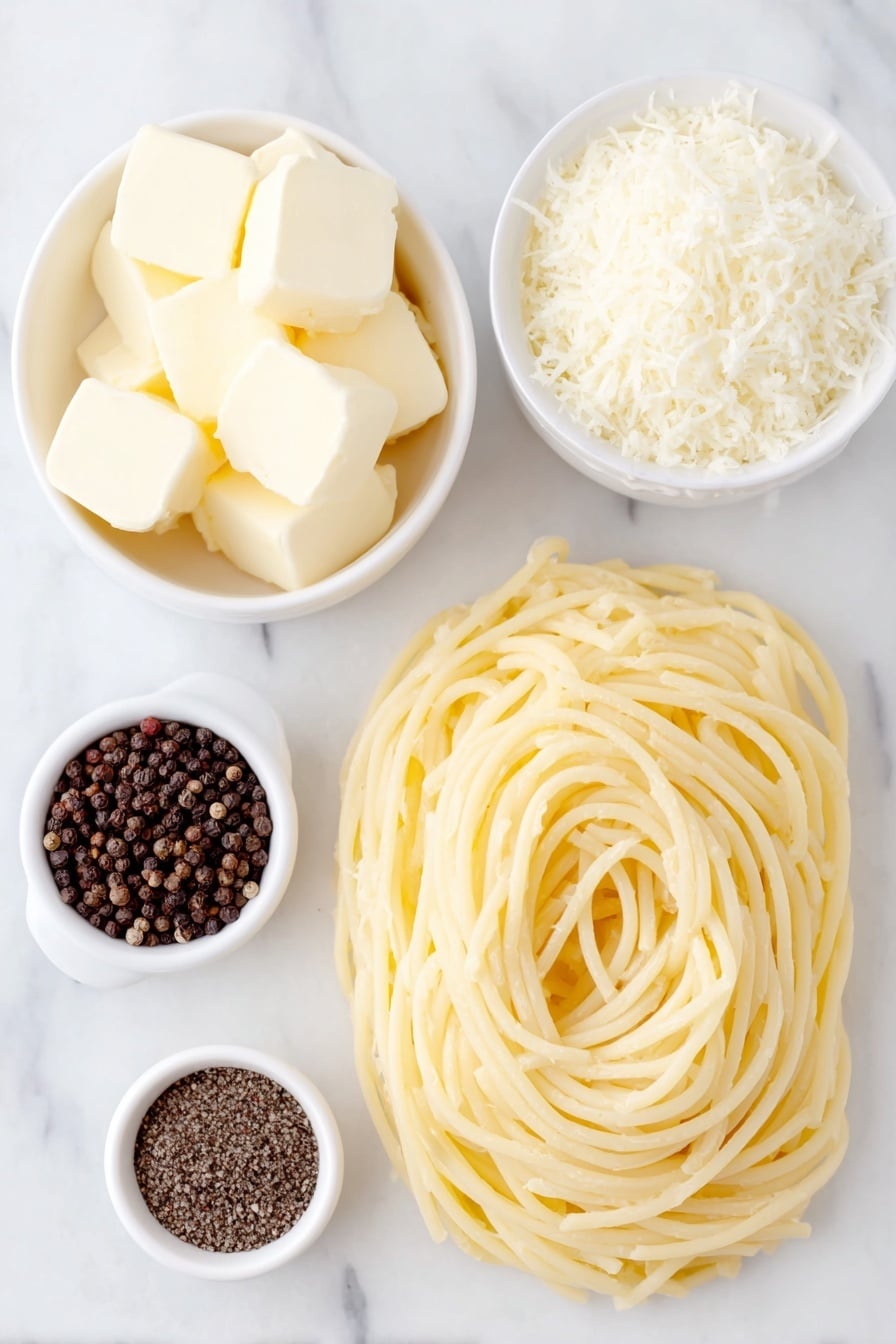
- Bucatini or Spaghetti: Bucatini is my personal favorite because of its hollow center that catches the sauce beautifully, but spaghetti works great too.
- Unsalted Butter: Using unsalted butter lets you control the saltiness of the dish perfectly.
- Pecorino Romano Cheese: Freshly grated is key here for melting smoothly and packing that salty, tangy punch.
- Black Pepper (Cracked and Toasted): Toasting the pepper intensifies its flavor, adding a lovely warmth and slight heat that makes this pasta sing.
Variations
I’ve often experimented with the classic Cacio e Pepe Pasta Recipe to suit different moods and ingredients on hand. While I love sticking to the pure simplicity, there are some variations you might enjoy if you want to change things up or make it your own.
- Add Garlic or Chili Flakes: For a little kick, I sometimes toss in a lightly sautéed garlic clove or sprinkle in some red chili flakes. It complements the cheese and pepper nicely.
- Use Parmesan Instead of Pecorino Romano: If you prefer a milder, creamier cheese flavor, Parmesan works well – although I find the sharpness of Pecorino hard to beat.
- Try Gluten-Free Pasta: I’ve swapped in gluten-free spaghetti when cooking for friends, and the sauce still clings nicely if you watch the cooking time carefully.
- Boost with Fresh Herbs: A sprinkle of finely chopped parsley or basil can add fresh brightness without overpowering the classic flavors.
How to Make Cacio e Pepe Pasta Recipe
Step 1: Cook Your Pasta to Al Dente Perfection
Start by bringing a large pot of water to a rolling boil over high heat. Don’t forget to add a generous pinch of salt—it seasons your pasta as it cooks. Toss in your bucatini or spaghetti and stir occasionally so it doesn’t stick. You’re aiming for “al dente,” which means the pasta should be tender but still have a slight bite—this usually takes about 6 to 8 minutes, but keep an eye on it because pasta cooks quickly. When it’s ready, drain the pasta but reserve about two-thirds of a cup of the starchy pasta water. This golden liquid will help you make that silky cheese sauce.
Step 2: Bring It All Together in the Pan
Return the pasta to your pot or slide it into a large skillet and set it over low heat. Add the butter and reserved pasta water, then gently toss everything together. The butter should just melt and start to blend with the pasta water, creating a luscious base. This is the moment you want to be patient – the sauce will slowly emulsify and become beautifully creamy.
Step 3: Melt in Your Cheese and Toasted Pepper
Next, sprinkle in the freshly grated Pecorino Romano and the toasted cracked black pepper. Toss quickly but gently to help the cheese melt evenly, without clumping or becoming stringy. You’ll want the sauce to coat each strand of pasta with that velvety, cheesy goodness. If it feels too thick or dry, add a splash more of reserved pasta water. Keep tossing until you reach a creamy, smooth sauce that clings perfectly.
Step 4: Plate and Garnish
Serve immediately – Cacio e Pepe waits for no one! Top with an extra sprinkle of Pecorino Romano if you like things cheesy (I always do) and a tiny dusting of freshly cracked black pepper. This final touch not only adds texture but amps up the peppery kick that makes the dish sing.
Pro Tips for Making Cacio e Pepe Pasta Recipe
- Toast Your Pepper: Toasting the black pepper before adding it releases oils that deepen the flavor dramatically—trust me, it’s worth the extra minute.
- Use Freshly Grated Cheese: Pre-grated cheese often has additives that stop it from melting well; freshly grated Pecorino is crucial for that silky sauce.
- Reserve Pasta Water: Don’t forget to save some pasta water — the starch in it is what helps emulsify your sauce smoothly without clumps.
- Toss Off Heat: To avoid cheese clumping or becoming grainy, toss your pasta with cheese off the stove, adding pasta water little by little.
How to Serve Cacio e Pepe Pasta Recipe

Garnishes
I love topping my Cacio e Pepe with an extra sprinkle of Pecorino Romano for that sharp, tangy kick that keeps every bite exciting. If I’m feeling fancy, a little drizzle of good-quality olive oil adds silkiness and shine. Freshly cracked black pepper on top is a must—it brightens the whole dish and adds texture.
Side Dishes
This pasta pairs beautifully with something light and fresh—think a crisp arugula salad with lemon vinaigrette or simply some roasted cherry tomatoes on the side. My family also loves it alongside garlic bread or crispy sautéed greens like spinach or kale for a bit of color and nutrients.
Creative Ways to Present
For special dinners, I’ve served Cacio e Pepe in wide shallow bowls, twirling portions into neat nests that look beautiful on the plate. Adding a sprinkle of microgreens or edible flowers gives it a restaurant-quality vibe. It’s always fun to pair it with a glass of chilled white wine to elevate the experience even more.
Make Ahead and Storage
Storing Leftovers
If you’re lucky enough to have leftovers, store them in an airtight container in the fridge for up to 2 days. The sauce will thicken as it cools, so I recommend reheating gently with a splash of water or broth to bring back the creamy texture.
Freezing
Freezing Cacio e Pepe isn’t my go-to because the creamy sauce can separate and become grainy when thawed. If you do freeze it, make sure to freeze just the pasta plain (without sauce) and add fresh cheese and pepper when reheating.
Reheating
The best way to reheat is in a skillet over medium-low heat with a bit of reserved pasta water or a splash of olive oil. Stir gently until warmed through and creamy again. Avoid microwaving if you can, as it can dry out the pasta and break up the sauce.
FAQs
-
What’s the difference between Cacio e Pepe and other pasta recipes?
Cacio e Pepe is uniquely simple, made with just cheese, black pepper, pasta, and butter or olive oil, focusing on bold, pure flavors. Unlike sauces that are tomato-based or creamy with heavy cream, this sauce relies on pasta water and Pecorino Romano cheese to achieve a creamy texture.
-
Can I use cheese other than Pecorino Romano?
While Pecorino Romano is traditional for its strong, salty flavor, Parmesan can be substituted for a milder taste. Just keep in mind that Pecorino melts differently and provides a sharper bite that is signature to this dish.
-
How do I prevent the cheese from clumping?
Make sure to toss the pasta with cheese off the heat and add pasta water gradually. The starchy water helps the cheese melt smoothly into the sauce rather than clumping or becoming stringy.
-
Is butter necessary in this recipe?
Butter adds richness and helps emulsify the sauce, but if you prefer, a good quality olive oil can be used instead. The butter gives a slightly creamier texture that I personally prefer.
Final Thoughts
I absolutely love how this Cacio e Pepe Pasta Recipe comes together with so little fuss yet tastes like you’ve spent hours in the kitchen. It’s quick, comforting, and completely satisfying. Whenever I make it, friends and family go crazy asking for the recipe because it feels like a special treat but without any complicated techniques or rare ingredients. If you’re after a no-stress pasta that packs an enormous punch of flavor with just a handful of ingredients, I promise this one will be your new favorite. Give it a try—you won’t regret it!
Print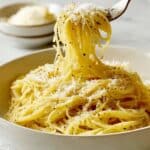
Cacio e Pepe Pasta Recipe
- Prep Time: 5 min
- Cook Time: 10 min
- Total Time: 15 min
- Yield: 2 servings
- Category: Main Course
- Method: Stovetop
- Cuisine: Italian
Description
Cacio e Pepe is a classic Roman pasta dish that combines just four simple ingredients to create a rich, creamy, and peppery sauce. This recipe uses bucatini or spaghetti tossed with butter, Pecorino Romano cheese, and cracked black pepper for an indulgent yet quick weeknight meal.
Ingredients
Ingredients
- 8 oz dried bucatini (or spaghetti)
- 2 tbsp unsalted butter
- ½ cup freshly grated Pecorino Romano (plus more for garnish)
- ½ tsp cracked black pepper (toasted)
Instructions
- Boil the Pasta: Fill a large pot with water and bring it to a boil over high heat. Add a small handful of salt to the boiling water, then add the pasta. Cook, stirring occasionally, until the pasta is al dente, about 6 to 8 minutes.
- Drain and Reserve Pasta Water: Drain the pasta, making sure to reserve about 2/3 cup of the starchy pasta water for the sauce.
- Combine Pasta and Butter: Return the pasta to the pot or transfer it to a large skillet placed over low heat. Add the reserved pasta water and butter, tossing together until the butter just melts, coating the pasta evenly.
- Add Cheese and Pepper: Sprinkle the grated Pecorino Romano and toasted black pepper over the pasta. Toss continuously until the cheese melts and combines with the butter and pasta water to form a creamy, velvety sauce.
- Serve: Plate the pasta and top with extra grated Pecorino Romano for garnish. Serve immediately while warm.
Notes
- This recipe uses only four main ingredients, making it incredibly simple and fast to prepare—ideal for busy weeknights.
- Toasting the black pepper before adding it enhances its flavor and aroma.
- If the sauce is too thick, add a little more reserved pasta water to loosen it.
- Use freshly grated Pecorino Romano for the best flavor and melt.
- Serve immediately for the creamiest texture.
Nutrition
- Serving Size: 1 serving (approx. 4 oz cooked pasta with sauce)
- Calories: 621 kcal
- Sugar: 3 g
- Sodium: 308 mg
- Fat: 20 g
- Saturated Fat: 12 g
- Unsaturated Fat: 7 g
- Trans Fat: 0 g
- Carbohydrates: 86 g
- Fiber: 4 g
- Protein: 23 g
- Cholesterol: 57 mg



